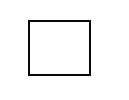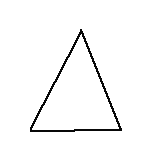BACKGROUND:
Children are born with the ability
to see in three dimensions. From the first building blocks to their
first rattler, they touch 3 dimensional objects. However, as children
begin school, the world of pencil and paper in a two dimensional
world, tend to dominate their learning. The impact is clear, students
begin to lose that innate ability to visualize three dimensionally.
Children must learn early, how to describe
3 dimensional objects. They must possess a vocabulary of geometric
terms and relationships to accomplish this task. Geometry is a mathematical
representation of the real world. Although geometry is perfect, the
nature it represents is not. Sometimes it is difficult for children
to see the relationship between geometry and nature.
A two-dimensional object is usually a representation
of a three dimensional object. Even a flat piece of paper has depth!
Common representations include:
A circle is a two-dimensional sphere.
A square is a two-dimensional cube.
A triangle is a
two-dimensional pyramid.
PROCEDURE:
Scientists and mathematicians many
time express their ideas on paper as sketches. This activity helps
students to draw three dimensional objects.
- Show students a sphere, a cube, and a pyramid.
Discuss the differences and similarities between each. For example
a sphere has no sharp points or flat surfaces, both the cube and the pyramid
do. The cube has six sides; a pyramid can have four or five sides
depending on what type of pyramid you have.
- Illustrate how a circle, square, and
triangle can be made to look “three dimensional” on paper. Showing
the progressive steps in the drawing process of each object, helps
the students to follow along and understand.
- Allow the students to practice on
scratch paper or on the board. This may take a little time, but the
students will be drawing these object for years to come.
|

CIRCLE |

SPHERE |
|

SQUARE |

CUBE |
|

TRIANGLE |

PYRAMID |
|